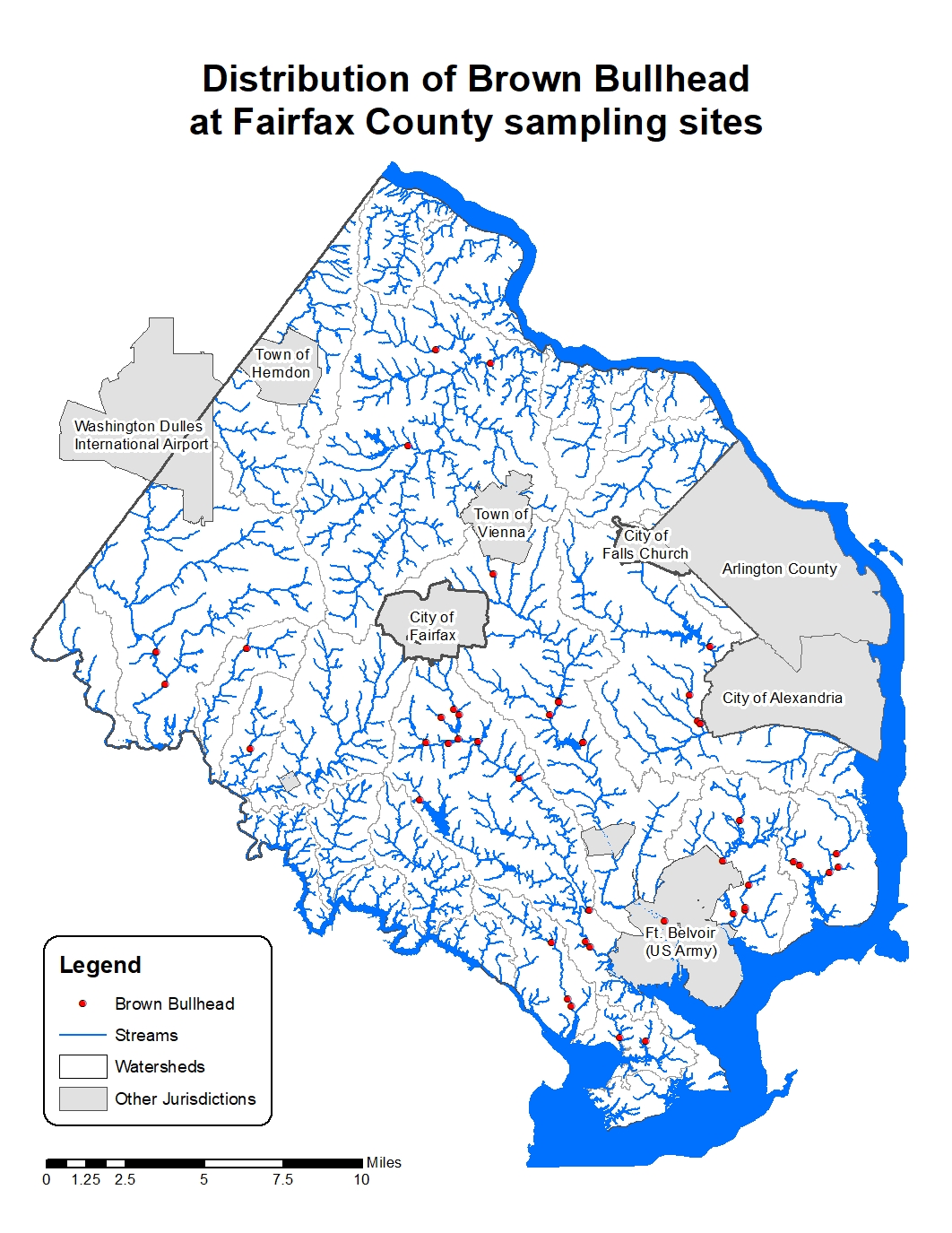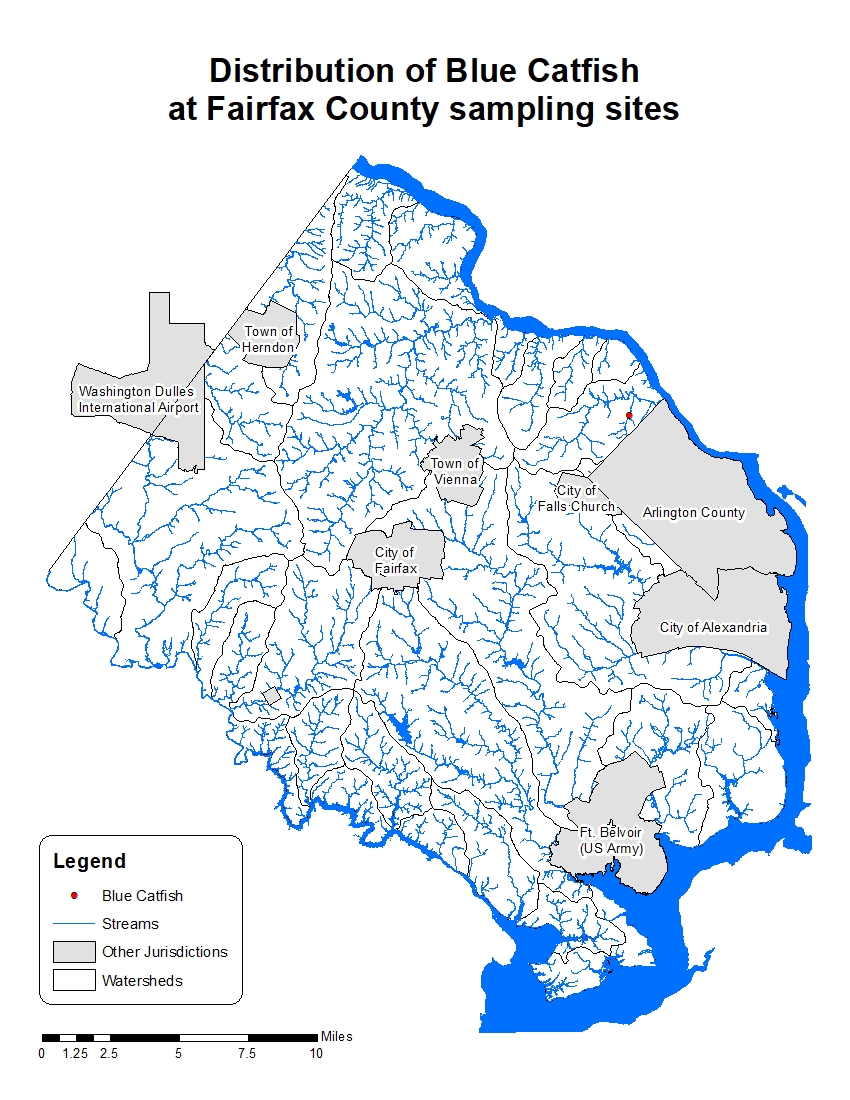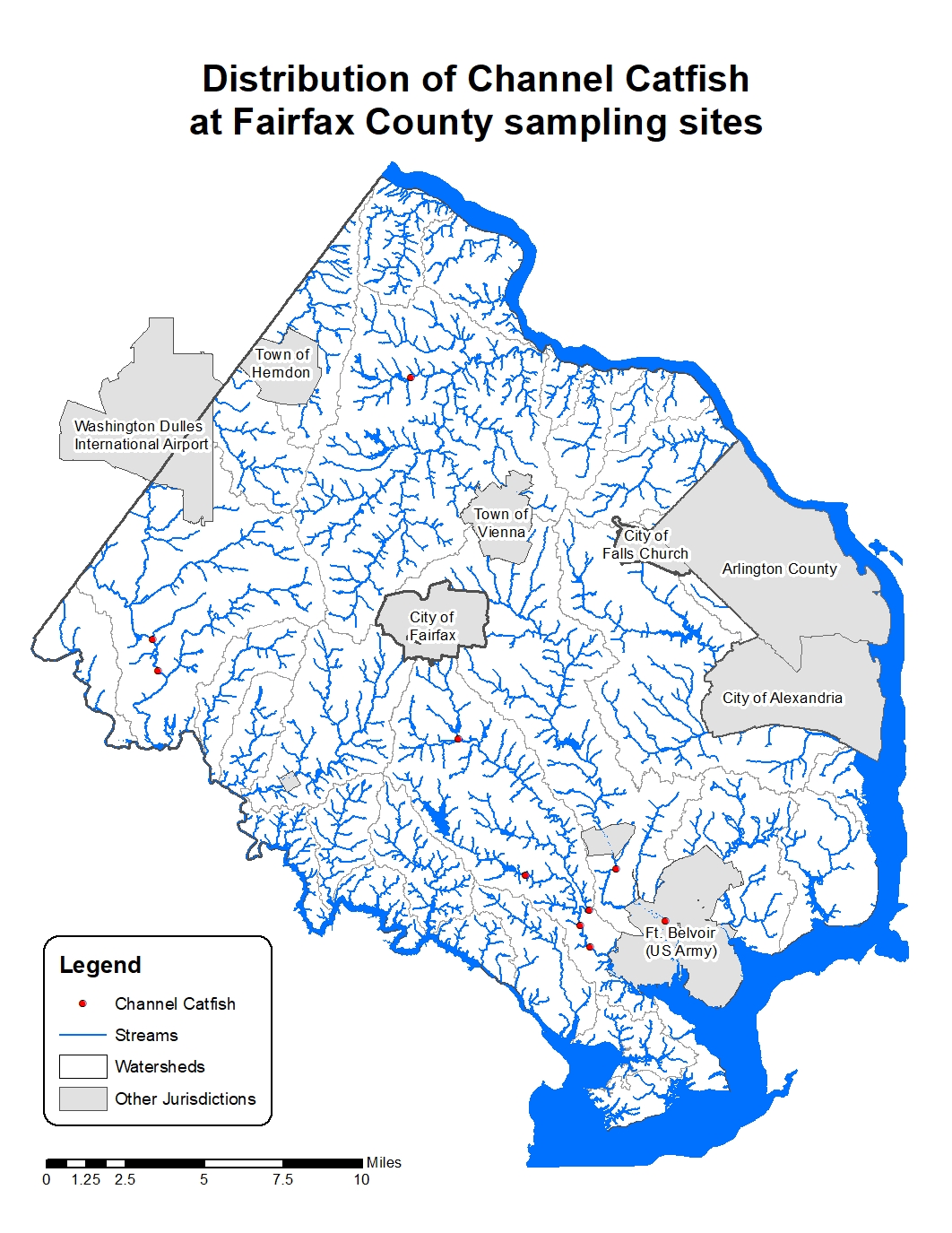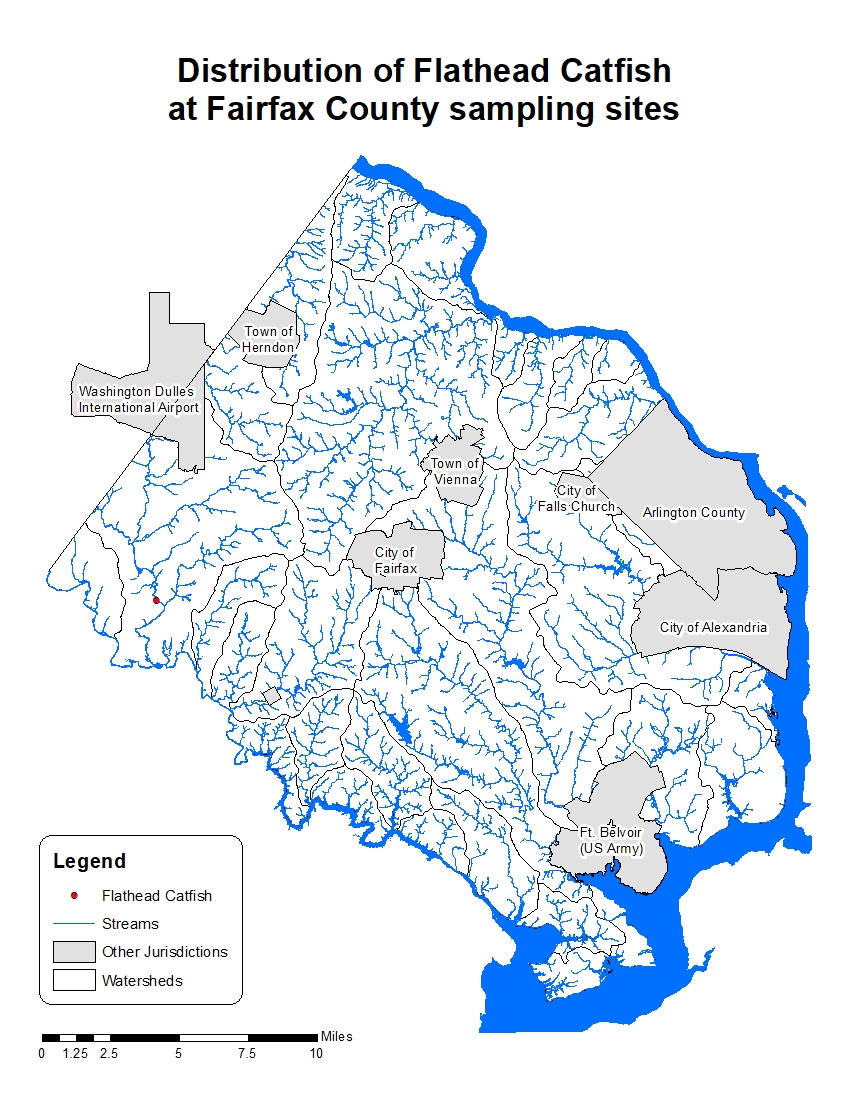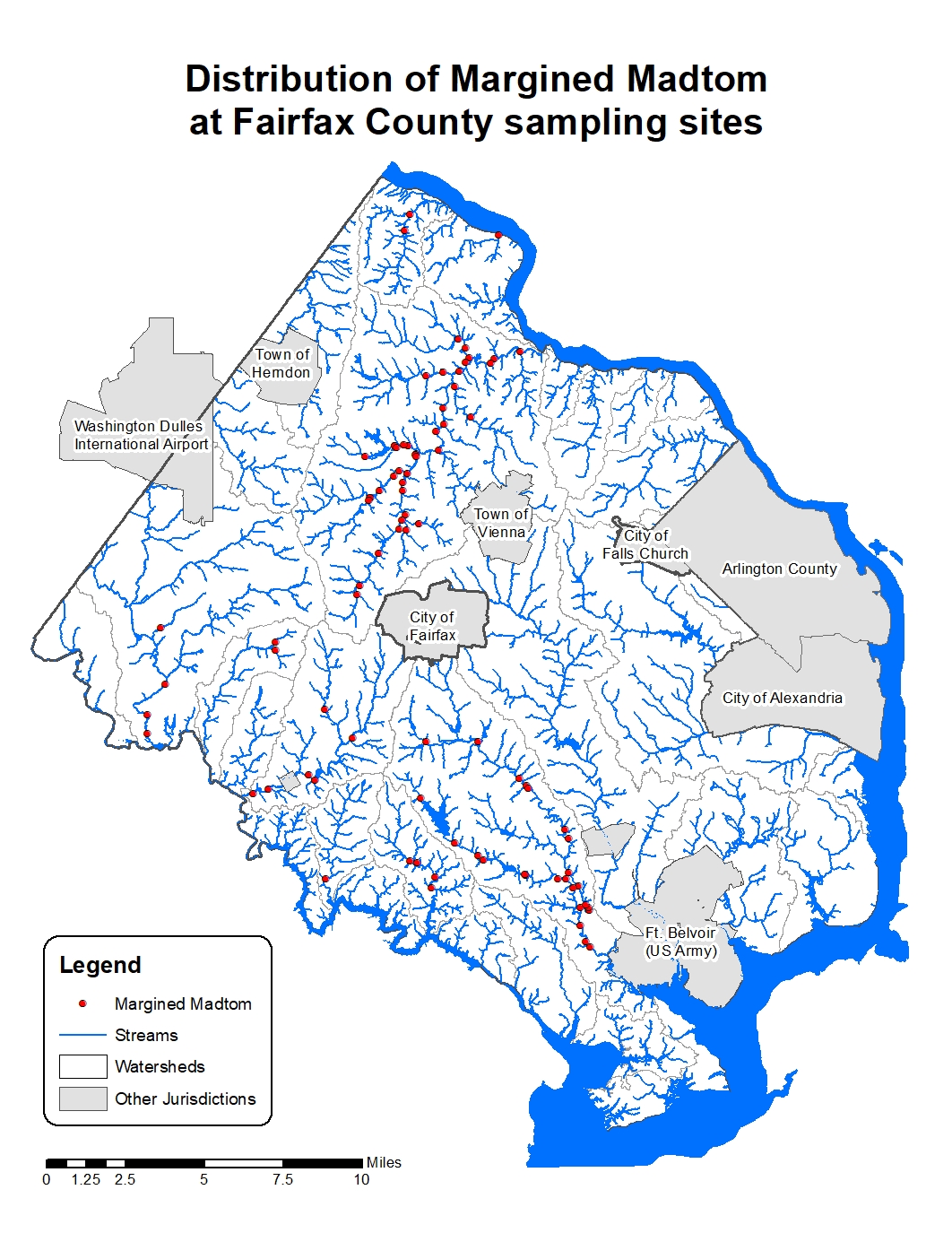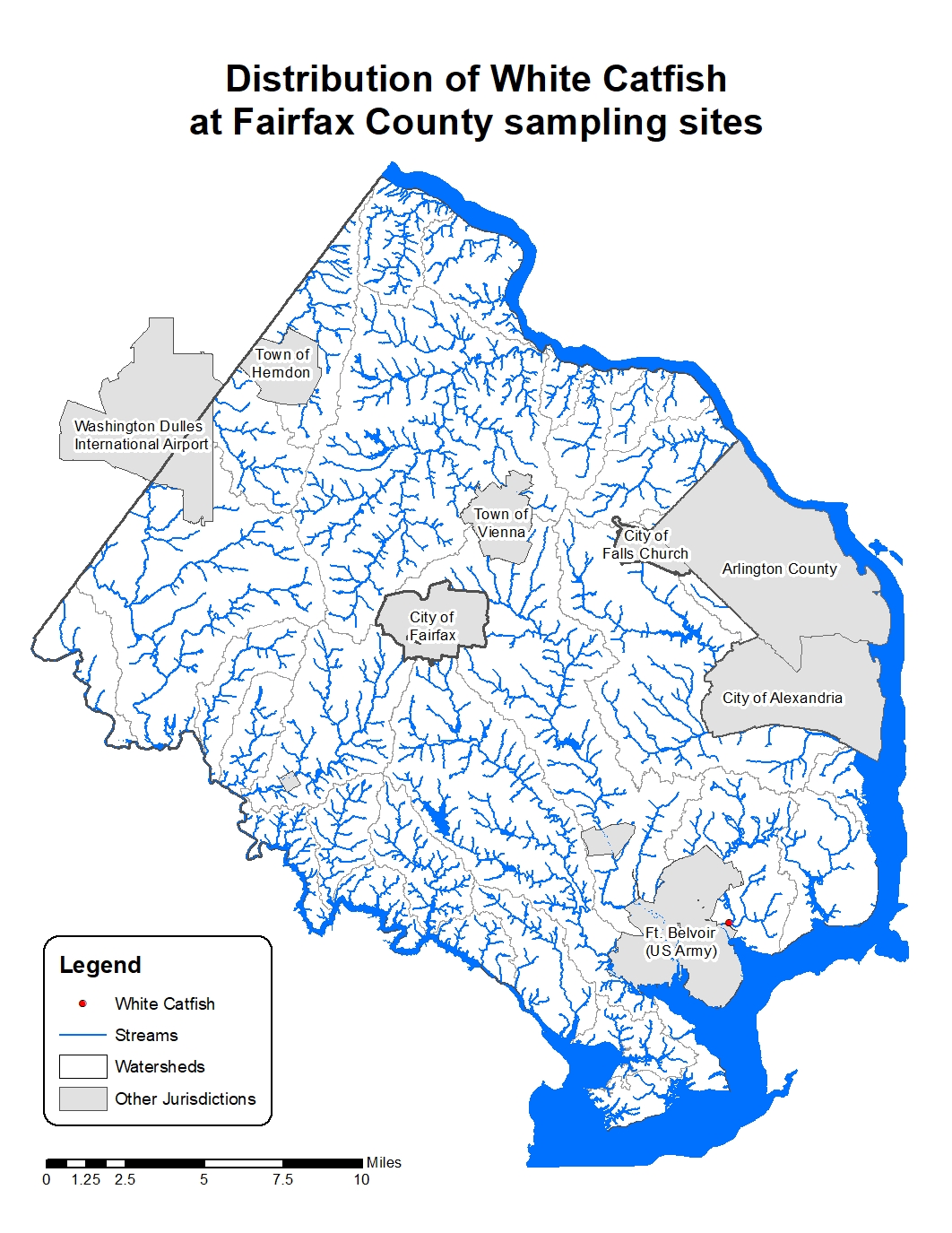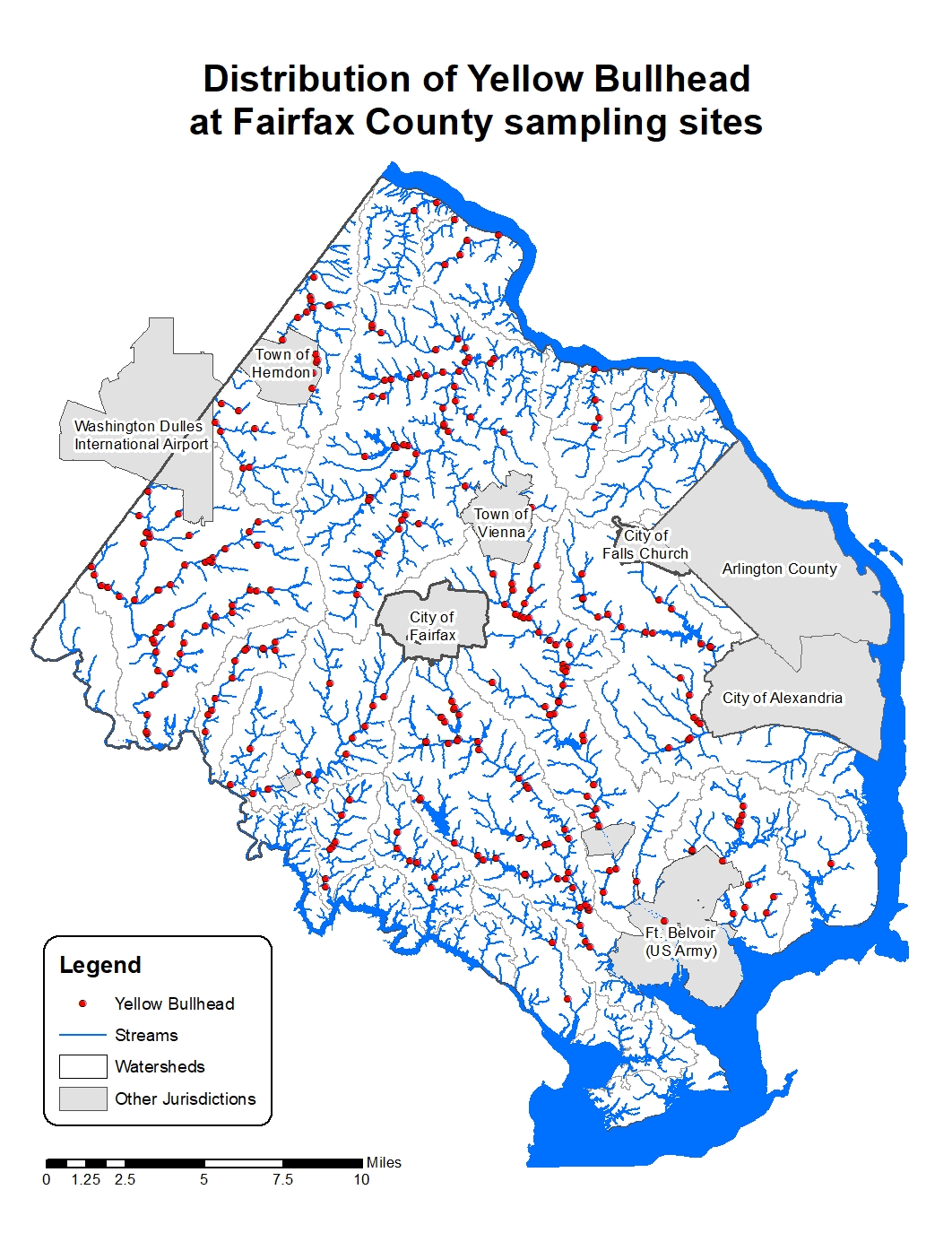On This Page
Brown Bullhead
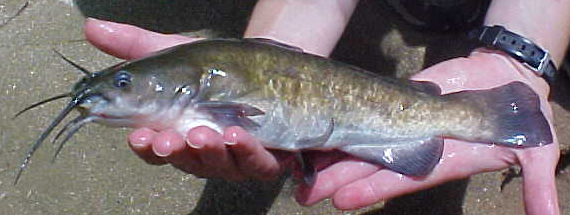
Scientific Name: Ameiurus nebulosus
Fairfax County Native: Yes
Size: 15 inches, rarely to 18 inches
Diet: Aquatic insects, fish and algae
Distribution sampling sites: Map
The brown bullhead is a member of the catfish family and is closely related to the yellow bullhead. The distinguishing characteristic between brown and yellow bullheads is that the brown bullhead has dark whiskers on the lower lip while the yellow bullhead has yellow whiskers on the lower lip.
Blue Catfish
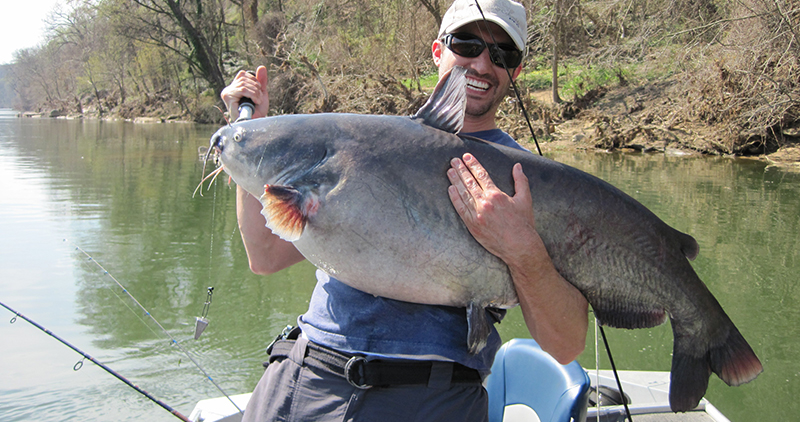
Scientific Name: Ictalurus furcatus
Fairfax County Native: No
Size: 30 inches, rarely to 65 inches
Diet: Fish, other vertebrates, and aquatic invertebrates
Distribution sampling sites: Map
Blue catfish are opportunistic predators that will eat nearly any fish or other prey they catch or scavenge.
Channel Catfish
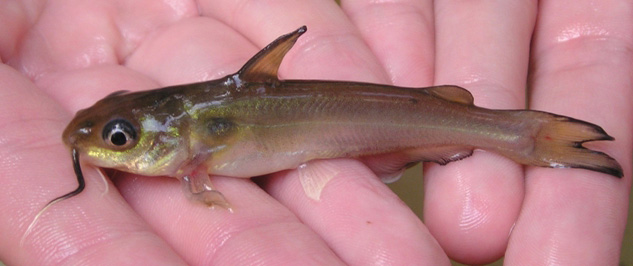
Scientific Name: Ictalurus punctatus
Fairfax County Native: No
Size: 28 inches, rarely to 35 inches
Diet: Aquatic invertebrates, fish and other vertebrates
Distribution sampling sites: Map
The channel catfish is a large fish that usually inhabits large rivers and lakes. Specimens collected during Fairfax County surveys were most likely fish that were pushed out of upstream lakes during high rains or fish that traveled up the streams from larger rivers like the Potomac. The Virginia state record is 31 pounds, 8 ounces.
Flathead Catfish
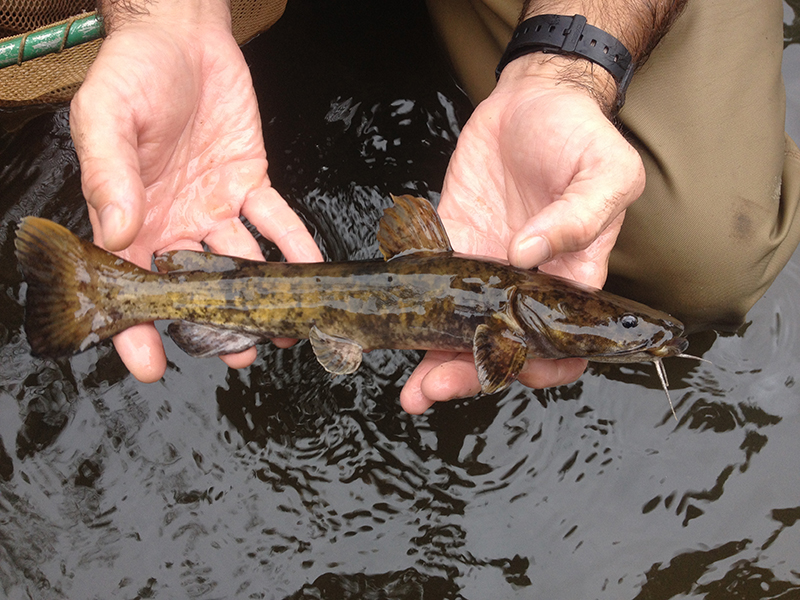
Scientific Name: Pylodictis olivaris
Fairfax County Native: No
Size: 30 inches, rarely to 60 inches
Diet: Fish, insects, and crustaceans
Distribution sampling sites: Map
Unlike other catfish, the flathead only feeds on live prey; adults are piscivorous ambush predators. “Pylodictis” means “mud fish,” and “olivaris” means “olive-colored.”
Margined Madtom
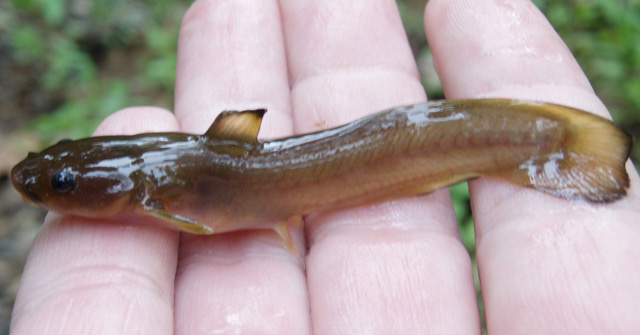
Scientific Name: Noturus insignis
Fairfax County Native: Yes
Size: 7 inches
Diet: Aquatic insects and fish
Distribution sampling sites: Map
Like all catfish, the margined madtom has hard spines in its dorsal and pectoral fins. To varying degrees, catfish in the family ictaluridae have venom in their spines with the madtoms inflicting the most painful sting. The sting from a madtom feels like a bee sting.
White Catfish
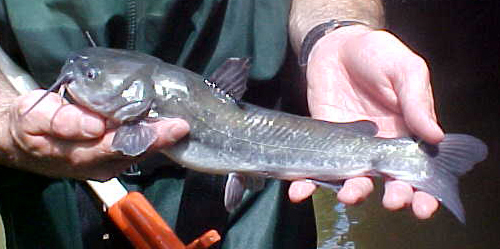
Scientific Name: Ameiurus catus
Fairfax County Native: Yes
Size: 18 inches, rarely to 20 inches
Diet: Aquatic invertebrates, fish and plant material
Distribution sampling sites: Map
The white catfish is only found in the tidal areas of Fairfax County. This catfish can live as long as 14 years. The Virginia state record is 7 lbs 6 oz.
Yellow Bullhead
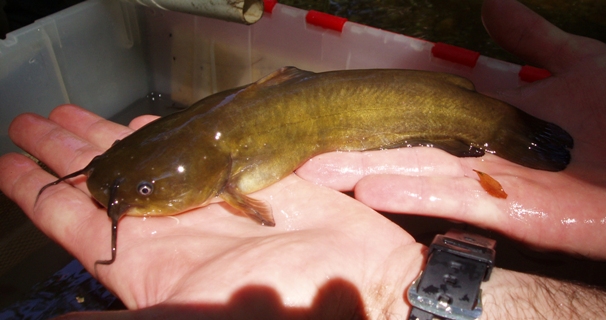
Scientific Name: Ameiurus natalis
Fairfax County Native: Yes
Size: 14 inches, rarely to 18 inches
Diet: Aquatic insects and fish
Distribution sampling sites: Map
With its wide distribution in Virginia, the yellow bullhead is the most commonly caught catfish. As its name implies, the yellow bullhead has yellow whiskers below its mouth.





